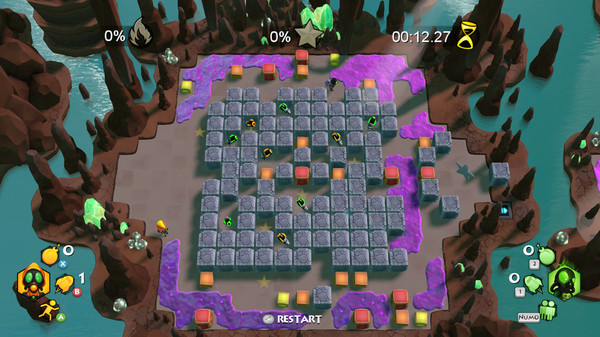Todd Hollenshead Talks New Studio, Porting First Game ‘Burnstar’ to Switch
By Steven T. Wright
LOS ANGELES (Variety.com) – Gaming luminary Todd Hollenshead is most often associated with the PC powerhouse , which defined the grammar and style of iconic early first-person shooters like “
Doom”
and “
Quake
.”
After nearly two decades at id, however, the former CEO finally split from his much-vaunted company in 2013. Now, Hollenshead is trying his hand at indie development with Nerve Software, a small Dallas-based studio that’s slowly eked out a name for itself as one of the reliable sub-studios that titans of interactive entertainment like EA and Activision rely on to produce some of the biggest franchises in gaming, from “
Call of Duty”
to 2016’s “
Doom”
reboot. But while such a “support” role might pay the bills, Hollenshead says that the tiny outfit is looking to branch out and produce their own games: most notably “
Burnstar
,” a hybrid puzzle-action solve-’em-up that Nerve is bringing to Switch on June 29th.
“Our contract work keeps the lights on, and obviously that’s really great,” says Hollenshead. “But like all studios, we have our independent streak. Since I’ve joined the team in January, we’ve moved increasingly in that direction. And with the recent success of the Switch, it just seemed like a logical move to bring ‘
Burnstar’
to that platform. It takes advantage of every unique aspect of the console.”
On first blush, “
Burnstar”
comes across like a fever dream from the heady days of the early 32-bit era, when swirls of color and blocky polygons helped disguise the difficulty that developers had translating classic 2D gaming concepts like simple platforming to the third dimension. This isn’t just a toothless throwback, however – beneath the charming exterior lies a tough-as-nails action-puzzler that demands intellect and finesse in equal measure.
Like “
Bomberman”
before him, your gas-masked hero (or one of his three buddies) primarily expresses himself by creative use of explosives to carve a path around the game’s crowded levels. Unlike his obvious inspiration, however, “
Burnstar”
isn’t packing an infinite supply of dynamite to throw around willy-nilly; as such, you must carefully ration your explosives to maximize the number of stars you collect in each level through clever chain reactions, all the while taking great pains to ensure you don’t blow yourself up in the process, or otherwise fall victim to one of the game’s many, many hazards, like veering rockets, or carnivorous crates.
As Hollenshead himself readily admits, this isn’t the first time that “
Burnstar”
has seen the light of day – it first crept its way onto the flooded shelves of Steam back in 2015, to a muted response. But the sudden surge of indies on Switch has given “
Burnstar”
a second lease on life, with Nerve taking the opportunity to rewrite the game from the ground up in Unity, as well as rejiggering some of its level design.
“In general, I just think that ‘
Burnstar’
is exactly the kind of game that people like to take on the go,” he says. “You take it with you, knock out a few levels, put it away, and try again later. Plus, the co-op element works really well with the two Joycons.”
Besides its steady stream of contract work, over the past few months, Nerve has been assembling a VR “experience” titled “
An Eternity on Pine Bluff Lane,”
which Hollenshead describes as a cooperative brain-cruncher for two or more players inspired by the real-life escape room-craze. A sole player wears the headset and describes their surroundings, while a crew of friends attempts to unravel the various dilemmas that imprison them. While the project seemed promising enough, the studio had to pause development in order to focus on shipping “
Burnstar”
and clearing out a new slate of support work. Hollenshead says that the studio plans to return to “
Pine Bluff”
soon; in the meantime, they hope that “
Burnstar”
will find an audience on the platform that they think uniquely suits it.
“That’s the life of an indie designer,” says Hollenshead. “You make it good, ship it out, and see what people say. Maybe we’ll make more. It’s all up to the fans, really. It’s not that different from big studio work, really. I’ve been in pitch meetings where a studio lays it all out – all the cards on the table – and the studio just decides to pass based on nothing at all. We know it’s good, and that’s what matters.”

